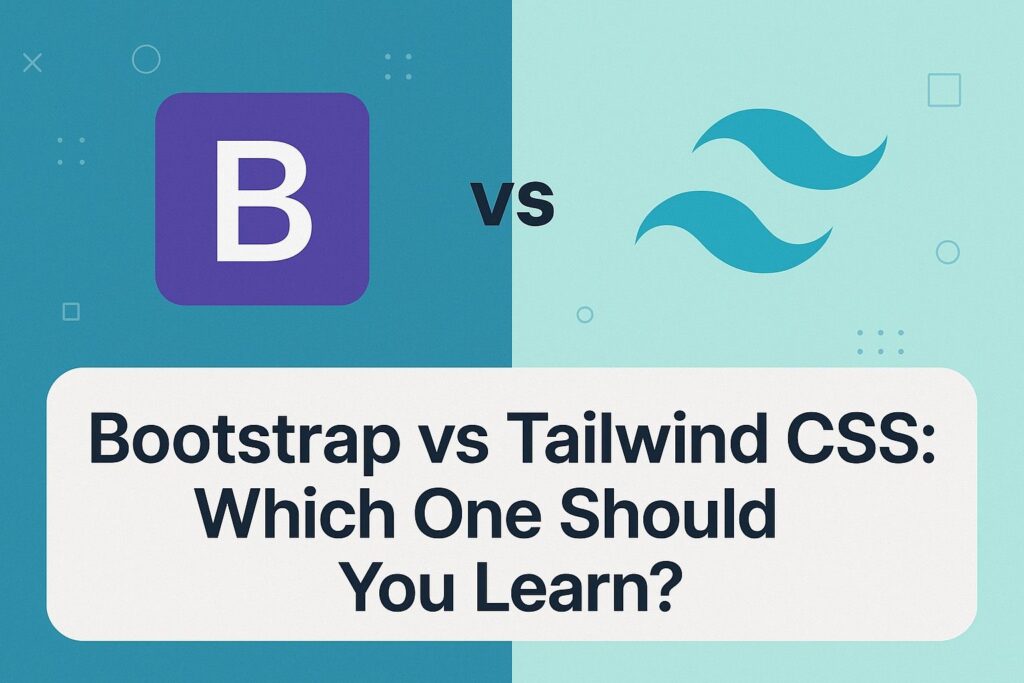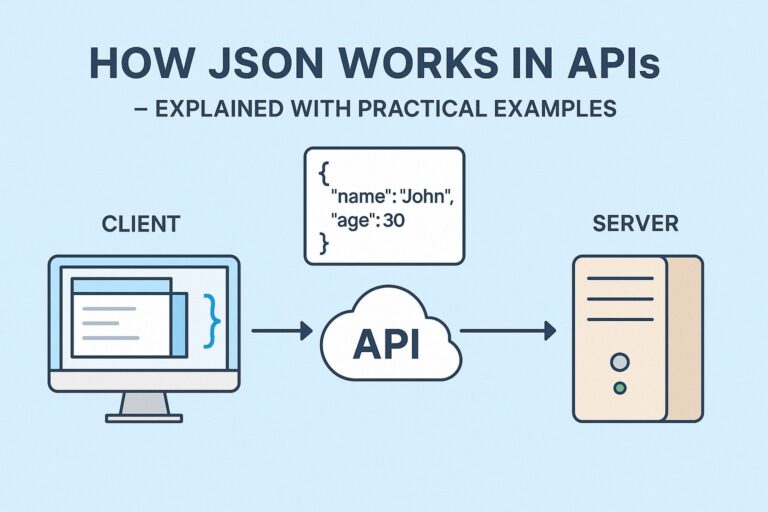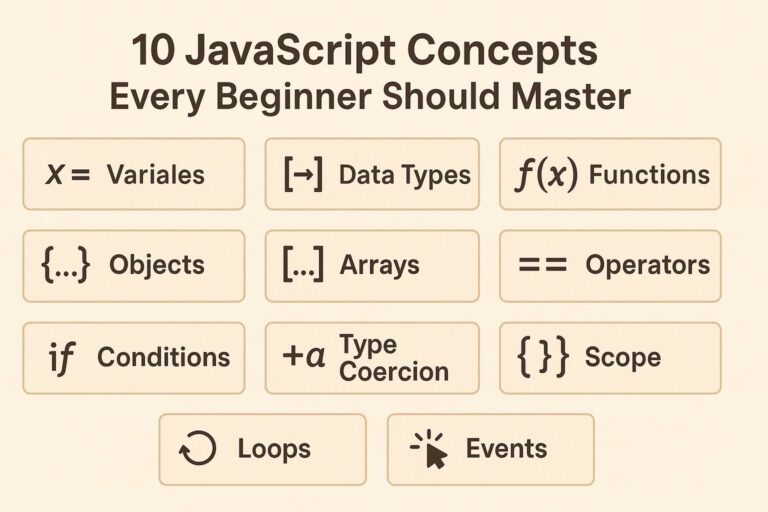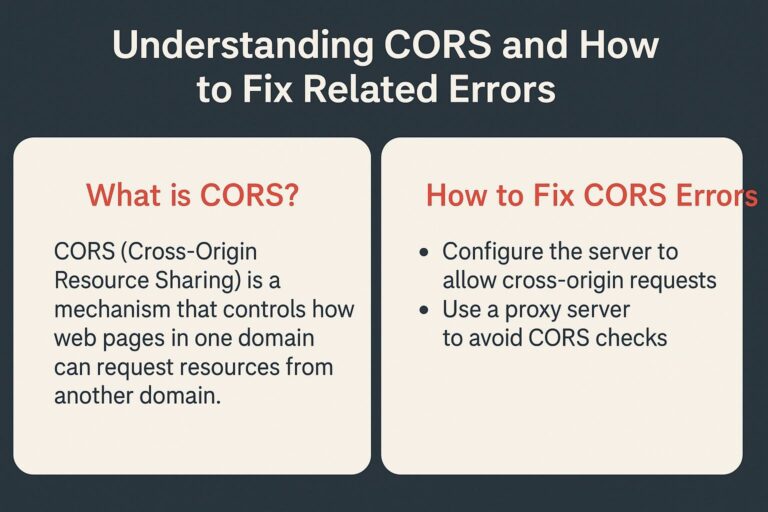
In the world of front-end development, choosing the right CSS framework can significantly influence the speed, maintainability, and scalability of a web application. Among the most popular tools available today are Bootstrap and Tailwind CSS. Though both aim to simplify styling and layout, they take very different approaches to solving design challenges.
This comprehensive guide explores Bootstrap and Tailwind CSS from multiple angles, helping you decide which one suits your project or learning journey best.
What Is Bootstrap?
Bootstrap is a comprehensive front-end framework initially developed by Twitter. It provides developers with a set of pre-built components, a responsive grid system, and integrated JavaScript functionality. Its component-first approach means developers can quickly build interfaces without designing elements from scratch.
Key Features of Bootstrap:
- Component-based architecture with prebuilt UI elements such as modals, tooltips, tabs, carousels, dropdowns, and navbars
- Built-in 12-column responsive grid layout
- Utility classes for spacing, sizing, alignment, and more
- Integration of Bootstrap JS for interactivity
- Customization through CSS variables and Sass variables
- Extensive documentation and community support
Advantages of Bootstrap:
- Fast setup with minimal CSS knowledge
- UI consistency across pages and devices
- Rapid prototyping and MVP development
- Compatible with major front-end frameworks like React and Angular
- Rich ecosystem with thousands of themes and extensions
Limitations of Bootstrap:
- Designs often look similar across websites using default components
- Requires overriding or extending base styles for custom designs
- Larger file size if unused CSS/JS is not removed
- Dependent on JavaScript for interactivity (uses jQuery in v4)
What Is Tailwind CSS?
Tailwind CSS is a utility-first CSS framework that offers low-level utility classes for every CSS property. Rather than offering components, Tailwind empowers developers to build custom designs by combining utility classes directly in HTML.
Key Features of Tailwind CSS:
- Utility-based approach with granular control over layout, color, typography, spacing, and responsiveness
- Built-in responsive, hover, focus, and dark mode variants
- Configuration via
tailwind.config.jsfor design tokens, themes, and custom utilities - Just-in-Time (JIT) compilation that generates only the styles used in your codebase
- Framework-agnostic and highly performant
Advantages of Tailwind CSS:
- Custom designs without writing custom CSS
- Encourages design consistency through shared utility patterns
- Smaller final CSS bundle thanks to PurgeCSS and JIT
- Easier to maintain and scale across large codebases
- Excellent integration with React, Vue, Svelte, and other modern tools
Limitations of Tailwind CSS:
- Steeper learning curve for beginners unfamiliar with utility-first syntax
- HTML files may become long and cluttered with class attributes
- Lack of ready-made components unless supplemented with UI libraries like Tailwind UI or DaisyUI
Detailed Comparison: Bootstrap vs Tailwind CSS
| Feature | Bootstrap | Tailwind CSS |
|---|---|---|
| Approach | Component-based | Utility-first |
| Predefined Components | Yes (modals, navs, forms, etc.) | No (design from scratch or use Tailwind UI) |
| Customizability | Moderate (requires Sass overrides) | Very high (via config files and design tokens) |
| Learning Curve | Lower, beginner-friendly | Steeper, especially for HTML readability |
| File Size (Optimized Build) | Larger unless manually trimmed | Smaller with JIT and PurgeCSS |
| Dependencies | Bootstrap JS (may include jQuery) | Pure CSS, no JS by default |
| Design Consistency | High out-of-the-box | Requires design discipline |
| Responsiveness | Grid system + utility classes | Mobile-first responsive utilities |
| Design System Support | Requires extra effort | Built-in via configuration |
| HTML Readability | Cleaner HTML | Long class lists in HTML |
| Community | Very large, long-established | Fast-growing, developer-driven |
| Browser Support | Legacy browser support (including IE11) | Focused on modern browsers |
| Development Speed | Faster for MVPs and simple UIs | Faster for custom UIs once familiar |
When to Use Bootstrap
Bootstrap is the right choice in the following scenarios:
- You need to build a working prototype or landing page quickly
- Your team is composed of junior developers or designers
- You are working on internal admin dashboards or CMS interfaces
- Your client requires Internet Explorer support or legacy browser compatibility
- You want to use pre-built themes or templates for rapid development
- You are focused on form-heavy applications where Bootstrap’s form controls shine
When to Use Tailwind CSS
Tailwind CSS shines in these situations:
- You are building a modern single-page application (SPA) using React, Vue, or Svelte
- You want complete control over the UI without overriding preexisting styles
- You are developing a design system or reusable component library
- You aim to minimize CSS output and improve performance
- Your team follows atomic design principles or utility-first workflows
- You want to integrate theming and dark mode directly through configuration
Developer Experience and Workflow
Bootstrap:
- Easier onboarding for newcomers
- Cleaner and simpler HTML output
- Less initial setup required
- Better for quick development with limited customization
Tailwind CSS:
- More opinionated development approach
- Encourages modularity and consistency across components
- Requires discipline to maintain clean, maintainable HTML
- Ideal for long-term projects that need scalable styling
Ecosystem and Tooling
- Bootstrap integrates well with tools like Webpack, Gulp, and various CMS platforms (WordPress, Drupal, etc.)
- Tailwind CSS has official plugins and integrations for PostCSS, Vite, Laravel Mix, and JavaScript frameworks
- Tailwind also supports first-party plugins for typography, forms, line-clamp, aspect-ratio, and animations
Career and Industry Trends
- Bootstrap remains a staple in corporate websites, internal tools, and educational platforms
- Tailwind CSS is increasingly adopted in startups, developer tools, SaaS products, and modern open-source projects
- Tailwind knowledge is in demand for roles requiring experience with modern frameworks and component-based design systems
Which One Should You Learn?
| Your Role or Goal | Best Choice |
|---|---|
| Absolute beginner in web development | Bootstrap |
| UI/UX designer transitioning to development | Tailwind CSS |
| Back-end developer adding front-end skills | Bootstrap |
| Front-end engineer in modern JS frameworks | Tailwind CSS |
| Building a prototype or MVP quickly | Bootstrap |
| Designing scalable and unique interfaces | Tailwind CSS |
| Working in legacy systems or corporate apps | Bootstrap |
| Creating a custom design system | Tailwind CSS |
Final Thoughts
Both Bootstrap and Tailwind CSS are excellent choices, but they serve different needs and development philosophies.
- Choose Bootstrap if you want quick results with minimal setup, standardized components, and a familiar structure that is easy for teams to understand.
- Choose Tailwind CSS if you want flexibility, performance, and the power to create highly customized, responsive UIs without writing CSS manually.
For developers who want to be versatile, learning both can provide a competitive advantage. Bootstrap gives you speed and simplicity, while Tailwind CSS offers control and scalability. Select the framework that aligns with your project goals, team structure, and long-term maintainability.

I’m Shreyash Mhashilkar, an IT professional who loves building user-friendly, scalable digital solutions. Outside of coding, I enjoy researching new places, learning about different cultures, and exploring how technology shapes the way we live and travel. I share my experiences and discoveries to help others explore new places, cultures, and ideas with curiosity and enthusiasm.






